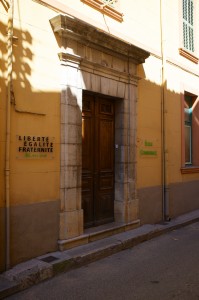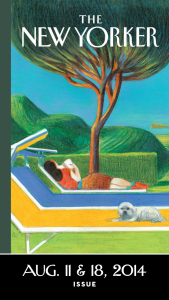All that remains of a good meal: a smartphone and a good wine. Who needs more?
Monthly Archives: August 2014
Canine Coincidence
Ecole Communale

Liberté, Égalité, Fraternité … et Laïcité so says the sign to the immediate left of the main entrance of the local primary school. Everyone entering is continously reminded of the country’s famous, national, three-part motto.
What of the fourth, less well-known term? Laïcité is often defined in English as secularity or secularism. Wikipedia suggests it dates from 1842 and has been used, from the end of the 19th century on, to mean the freedom of public institutions, especially primary schools, from the influence of the Catholic Church.
However, given the decline of Catholicism and the rise of other religions, it’s probably more appropriate to think of it as signifying “the absence of religious involvement in government affairs, as well as absence of government involvement in religious affairs”.
But what a thing to remind everyone of as they go to school every day. No religion here please, we’re French! I wouldn’t have thought it equally as important as Freedom, Equality and Brotherhood, would you?
Lollipops
Super Moon Provençal
Bastide de Blacailloux
Holiday Packing
March 20, 1915
Besides 1 man killed and 2 wounded, ‘Fletcher* was shot through the head by a sniper just after breakfast. During this tour he had gone out and brought in a French tricolour which the Germans had fastened to a tree right over their wire. The flag was afterwards presented to Eton College where he had been a master. He will be a great loss, not only for his gallantry, but for his personality and his conversation at Mess. To return off a cold and sticky digging party to Streaky Bacon [Farm] to find him sitting up over a decanter of rum with Wynne-Edwards and chanting in Greek a chorus from Aristophanes, or to hear his gay voice through a billet window on a bright March morning declaiming Swinburne’s “The Hounds of Spring are on Winter’s traces,” or watch him blowing smoke-rings after Mess while he parried the C.O.’s chaff about “University Education,” was an essential part of the amazing mixture of those days. There was something truly Elizabethan about “The Don”. He was buried in the cemetery on the right hand of the road as we go out to Bois Grenier.’
The war the infantry knew 1914-1919 by Captain J. C. Dunn, Abacus 2014.
*Second Lieutenant Walter George Fletcher, 1888-1914.






